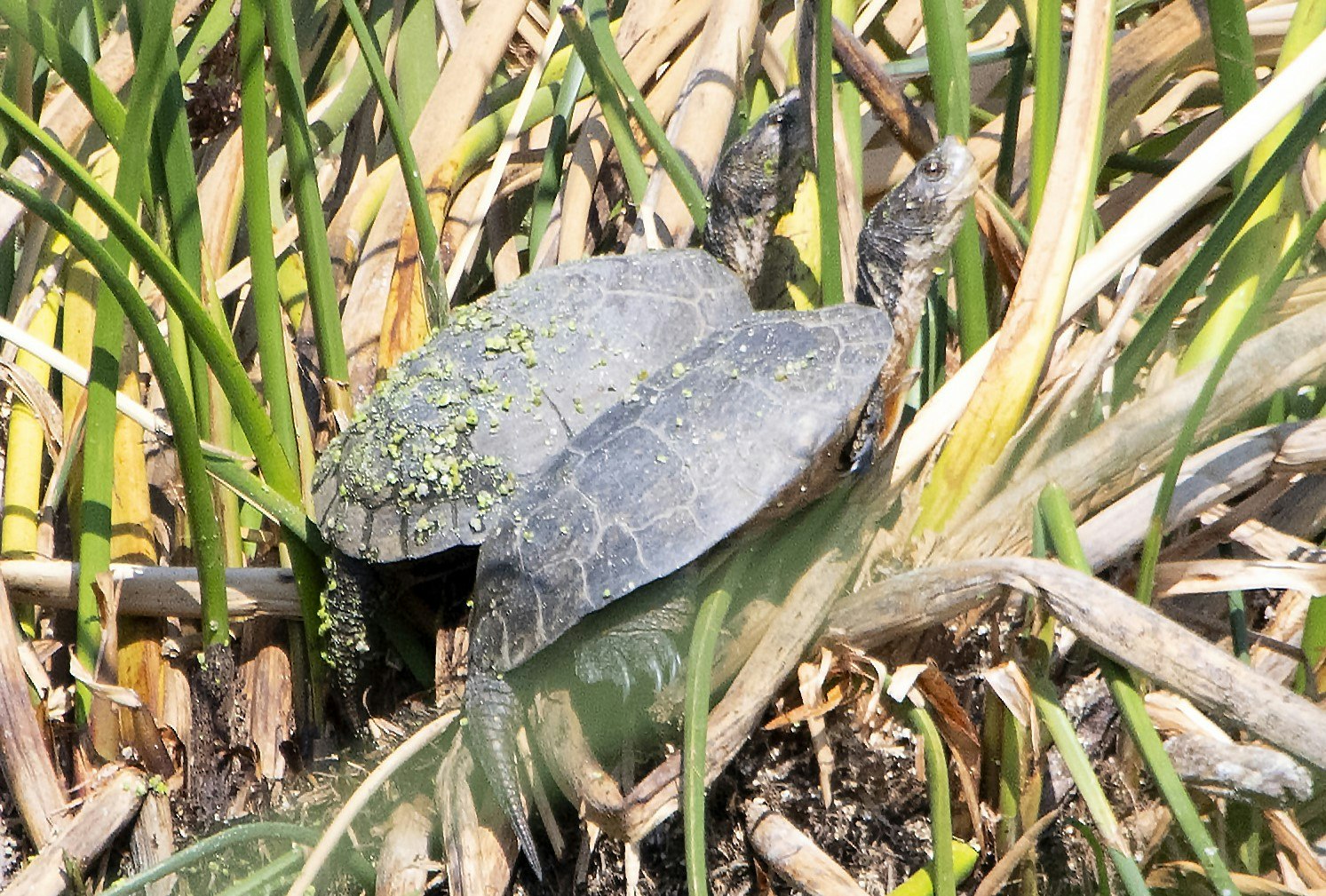Critter of the Quarter: Western Pond Turtle

Meet Moorhen Marsh resident, the Western Pond Turtle! The Western Pond Turtle has two species that are found in California, the Northern (Actinemys marmorata) and Southern (Actinemys pallida). It is a medium-sized turtle, reaching 7 and 9 inches. Adult turtles have a yellowish belly, with dark blotches and black spots or lines found on top of their heads. Adult males tend to have a flatter shell than females, as well as thicker tails and yellow or whitish chins and throats. Female turtles have higher, dome-shaped shells, smaller heads, flatter bellies, and darker chin and throat markings.
Western Pond turtles are omnivorous. They eat a variety of insects, tadpoles, frog eggs, snails, leeches, aquatic beetles, dragonfly larvae, and fish. Plant foods include filamentous algae, lily pods, tule and cattail roots.
Nesting occurs from late May until the middle of July. Females find a site, usually with dry soil, sparse vegetation, and a southern exposure. Once the site is prepared, she deposits a clutch of 3 to 13 eggs. After laying the eggs, the hole is filled with a mixture of vegetation and dirt to provide an air space, then covered with wet soil to keep the eggs in a humid environment. The eggs incubate naturally underground for 90-130 days, depending on the temperature.
Populations of western pond turtles are in decline due to disease, upland and aquatic habitat alterations and destruction, and predators.











